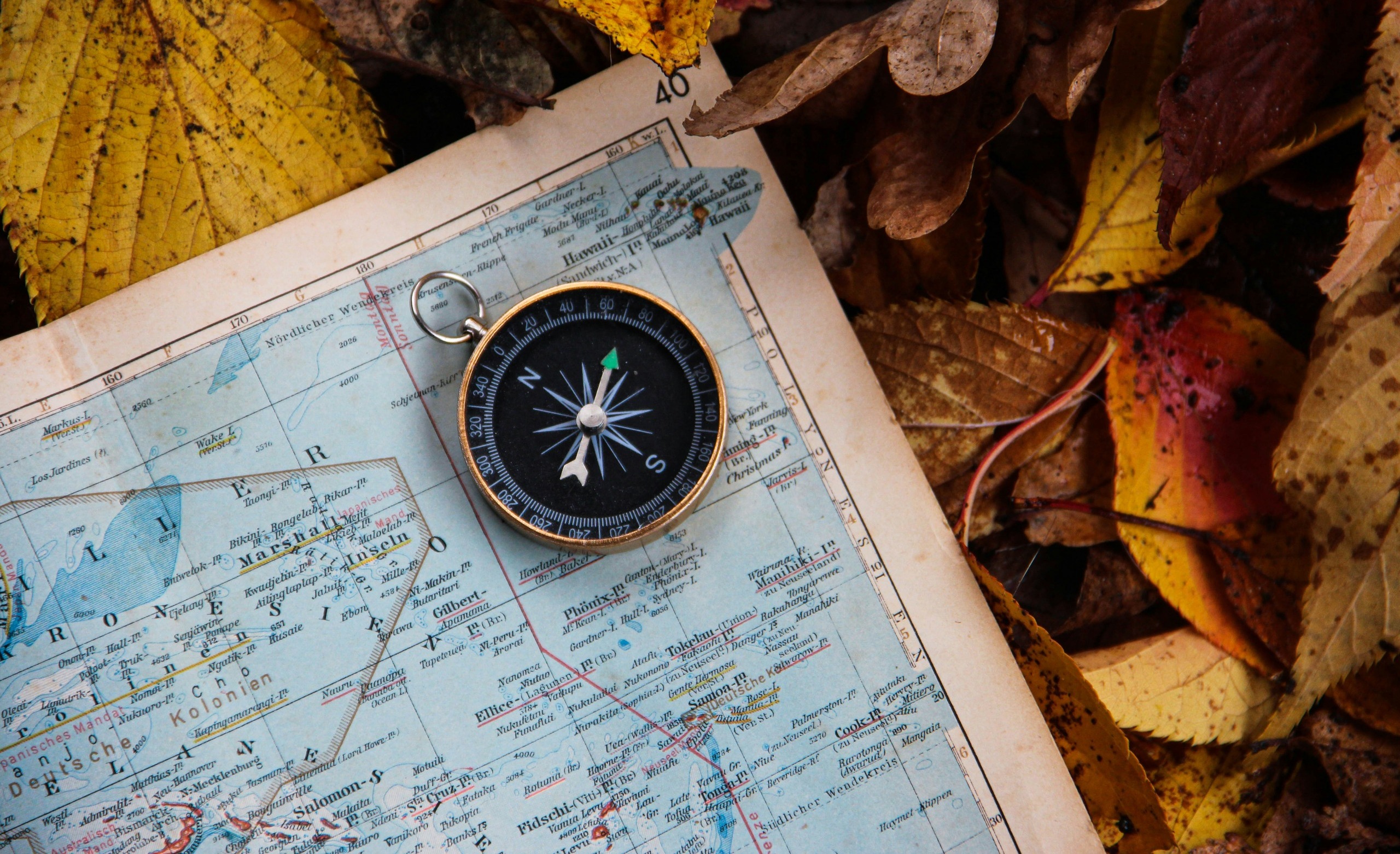
Learning Navigation For Survival
Learning navigation for survival extends beyond just knowing how to read a map or use a compass; it encompasses understanding our environment and utilizing various methods to find your way home safely. Imagine yourself lost in the wilderness, surrounded by towering trees and unfamiliar terrain.
The sun is setting, casting long shadows that blur your sense of direction. Panic begins to creep in as you realize that finding your way back could be a matter of life or death. This scenario underscores the critical importance of navigation skills in survival situations.
Whether you’re an avid adventurer or simply someone who enjoys weekend hikes, mastering navigation can empower you with confidence and peace of mind when exploring the great outdoors. Let’s dive into why honing these essential skills is so vital and explore different techniques that could one day save your life.
Why Navigation is an Essential Survival Skill
Navigation is a crucial skill that can make the difference between safety and peril in survival situations. When lost in the wilderness, knowing how to find your way back can save lives. Understanding navigation means you can identify your location and establish a route. This knowledge helps prevent unnecessary wandering and exhaustion.
It fosters confidence, allowing individuals to venture into unfamiliar territories without fear. With proper navigation skills, one learns to read maps, use compasses, and recognize natural landmarks. The ability to navigate also enhances situational awareness. You develop an understanding of your environment—the terrain, weather patterns, and potential hazards—enabling better decision-making.
In emergencies where technology fails or becomes unavailable, traditional navigation skills become invaluable tools for survival. Whether trekking through dense forests or traversing vast deserts, mastering navigation ensures you stay oriented when it matters most.
Different Methods of Navigation:
Navigating the wilderness can be both thrilling and intimidating. Mastering different methods opens up a world of possibilities. Employing these diverse methods equips you for countless survival scenarios, enabling confident exploration without reliance on technology alone.
A. Using a Compass
A compass is a timeless tool for navigation, essential for anyone venturing into the unknown. It operates on the principle of magnetism, pointing toward magnetic north. This simple yet effective device can guide you through dense forests or across vast deserts.
Using a compass requires understanding its parts. The needle indicates your direction while the rotating bezel helps set bearings. When using it, hold it flat and steady to get an accurate reading.
To navigate effectively, combine your compass with a map. Identify landmarks and orient yourself accordingly. This duo creates a powerful navigation system that enhances confidence in unfamiliar terrain.
Regular practice makes perfect when utilizing a compass. Familiarize yourself with its workings before you need it in real-life situations. Mastering this skill ensures you’re not just wandering but moving purposefully toward safety or adventure.
B. Using the Stars and Celestial Bodies
Navigating by the stars is one of humanity’s oldest skills. Long before compasses and GPS, people relied on celestial bodies to find their way.
The North Star, or Polaris, is a vital reference point in the Northern Hemisphere. It remains fixed while other stars move around it, making it an excellent guide for determining direction at night.
In addition to Polaris, constellations can also help with navigation. The Big Dipper points toward the North Star and serves as a handy tool for travelers under the night sky.
Learning about different celestial movements enhances your navigation skills further. Understanding how seasons affect star visibility can prepare you for various environments and conditions.
Whether you’re camping in remote areas or lost in nature’s embrace, knowing how to read the heavens opens up new paths and possibilities. Embrace this ancient art; you never know when it might come in handy.
C. Using Natural Signs and Landmarks
Using natural signs and landmarks can be a game-changer in navigation, especially when technology fails. Nature offers subtle clues that can guide you through unfamiliar terrain.
Observe the sun’s path. It rises in the east and sets in the west, providing a reliable directional reference throughout the day. Shadows cast by trees or boulders also shift predictably with time.
Familiarize yourself with local flora and fauna. Certain plants indicate proximity to water sources, while animal trails often lead to food or shelter. Mountains, rivers, and valleys also serve as excellent markers on your journey.
Weather patterns can inform your route too. For instance, prevailing winds may indicate coastal proximity or elevation changes ahead.
Engaging with these elements not only enhances survival skills but deepens your connection to nature itself—an invaluable experience for any adventurer.
Basic Navigation Tools to Have:
When venturing into the wilderness, having the right navigation tools is essential. Each tool serves its purpose and enhances your ability to navigate effectively in various environments. Investing time in learning how to use them properly will pay off when it matters most.
A. Map and Compass
A map and compass are timeless tools for navigation. They serve as a reliable duo, guiding adventurers through unknown terrain.
Understanding how to read a map is essential. Maps offer vital information about landscapes, landmarks, and elevation changes. Familiarize yourself with symbols and scales to make the most of this resource.
The compass complements the map perfectly. It points toward magnetic north, helping you establish direction. Knowing how to take a bearing will allow you to align your map with the real world.
Practice regularly by combining both tools on local hikes. This hands-on experience builds confidence in navigating various environments without relying solely on technology. Embrace these classic methods; they can be lifesavers in survival situations when modern devices fail or run out of battery life.
B. GPS Device
A GPS device can be a game-changer in navigation for survival situations. Unlike traditional maps, it provides real-time location data and detailed routes at your fingertips.
These devices utilize satellite signals to pinpoint your exact position on Earth. This accuracy is invaluable when you’re lost or in unfamiliar territory. With a reliable GPS, you can track trails, locate water sources, or even find help if necessary.
Modern GPS units often come equipped with features like waypoint marking and tracking capabilities. You can save specific locations that may aid your journey later on.
Battery life is crucial for any electronic device used outdoors. Always carry extra power sources or choose models known for their longevity under continuous use.
While technology offers great assistance, remember that reliance solely on a GPS can lead to complacency. It’s best paired with other navigation methods for comprehensive skill-building in wilderness scenarios.
C. Survival Watch with Navigation Features
A survival watch with navigation features is an essential tool for anyone venturing into the great outdoors. These watches often come equipped with GPS capabilities, making it easier to track your location and journey.
Most models include altimeters, barometers, and compasses. This combination helps monitor both elevation changes and weather conditions while navigating through diverse terrains. The ability to access this information instantly can be a game changer in a survival situation.
Durability is key in these watches, designed to withstand harsh environments. Many are water-resistant and built to endure extreme temperatures.
Some advanced versions even allow users to download maps or create waypoints. This feature can prove invaluable when trying to find your way back after exploring unfamiliar areas.
Having a reliable timepiece on hand not only keeps you punctual but also enhances your overall safety during outdoor adventures.
Practicing Navigation Skills:
Practicing navigation skills is crucial for anyone who spends time outdoors. It enhances your confidence and ensures you’re prepared for unexpected situations.
A. Taking Classes or Workshops
Taking classes or workshops is a practical way to enhance your navigation skills. Many outdoor organizations and survival schools offer courses specifically focused on navigation techniques.
These programs often cover fundamental concepts, like map reading and compass use. You’ll gain hands-on experience in various settings, which can boost your confidence significantly.
Learning from experts allows you to ask questions and receive immediate feedback. This interactive environment fosters deeper understanding compared to self-study methods.
Additionally, many classes include scenarios that simulate real-life challenges. Practicing these skills under pressure helps solidify your knowledge.
Consider exploring local community centers or outdoor shops for upcoming workshops. Delving into this learning avenue not only enriches your skill set but also connects you with fellow enthusiasts who share similar passions in survival training.
B. Going on Practice Trips
Going on practice trips is an excellent way to refine your navigation skills. The real-world experience you gain from these outings will enhance your confidence and competence. Choose locations that challenge your abilities, whether it’s a dense forest or a rugged mountain trail.
Before heading out, plan your route carefully. Use maps and compasses to chart your course, ensuring you understand how to read the terrain effectively. This not only helps with navigation but also builds familiarity with different landscapes.
During the trip, put theory into action. Track your progress using various methods—compass readings, celestial bodies at night, or natural landmarks during the day. Each successful navigation reinforces what you’ve learned in training.
After each practice excursion, reflect on what worked well and where you struggled. This self-assessment can help you identify areas for improvement in future adventures while expanding your skill set in practical settings.
Navigation Resources Online
Navigating the vast world of online resources can significantly enhance your skills. Numerous websites and forums focus on survival techniques, including navigation. YouTube is a treasure trove for visual learners. Many experienced adventurers share their tips through engaging videos, covering everything from basic compass use to advanced celestial navigation.
Online courses provide structured learning opportunities. Platforms like Udemy or Coursera offer classes tailored to various skill levels. You can learn at your own pace while receiving expert guidance. Mobile apps also play a crucial role in modern navigation training.
Several applications provide interactive maps and tutorials that make practicing easier and more accessible. Don’t overlook social media groups dedicated to outdoor skills. These communities often exchange valuable insights, experiences, and recommendations about essential tools and methods for navigating in the wild.
Mistakes to Avoid While Navigating
Navigating can be tricky, and mistakes can easily lead to disorientation. One common error is relying solely on technology. GPS devices can fail or run out of battery, leaving you stranded without a backup plan. Another frequent oversight is neglecting to check the weather before heading out.
Sudden changes in conditions can obscure visibility and make familiar landmarks unrecognizable. Failing to practice navigation skills regularly is another pitfall. Like any other skill, navigation requires practice to maintain proficiency. Ignoring your surroundings also poses risks.
Focusing too much on maps or devices may cause you to overlook natural cues, like trails or terrain features that could guide your way. Never underestimate the importance of planning ahead. A detailed route with alternative paths ensures you’re prepared for unexpected challenges along your journey.
Final Thoughts and Recommendations
Navigating your way through unfamiliar terrain can be daunting, but mastering navigation skills is crucial for survival. The ability to find your way not only boosts confidence but also enhances your chances of making it back safely. Remember that learning navigation is an ongoing process.
Start by familiarizing yourself with various methods like using a compass or reading the stars at night. Investing in basic tools such as a map and compass, or even a reliable GPS device, lays a solid foundation. Practice makes perfect—consider attending workshops and embarking on short trips specifically to hone your skills.
This will help you build intuition about different environments and terrains. Don’t forget the wealth of resources available online; they can supplement your knowledge significantly. But be cautious: common mistakes often stem from over-reliance on technology or neglecting traditional methods.
Embrace the journey of learning navigation for survival! Equip yourself with knowledge, practice diligently, and remember that every trip offers valuable lessons. Your preparedness today could mean safety tomorrow.



